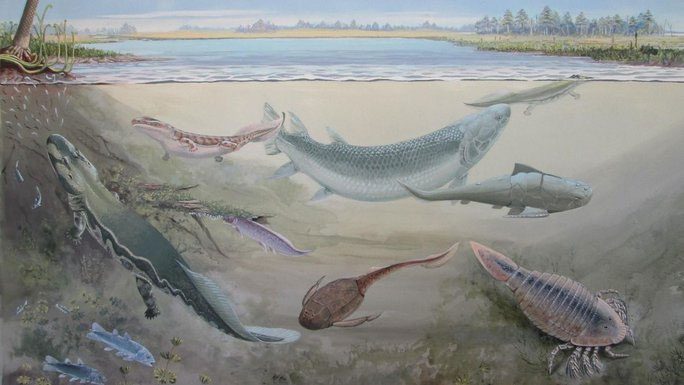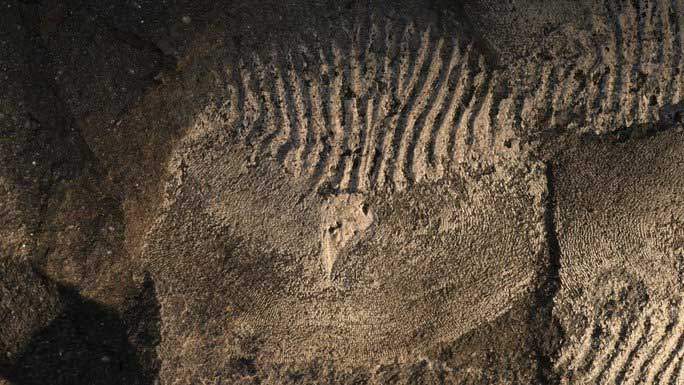Older than dinosaurs, as large as a crocodile, and equipped with deadly fangs, the freshwater monster Hyneria udlezinye is an extinct species that lived about 350 million years ago during the late Devonian period of the supercontinent Gondwana. This giant fish reached lengths of approximately 4 meters and weighed about 400 kilograms.
Hyneria udlezinye, in the native IsiXhosa language of present-day South Africa, means “the one who eats others”, according to Live Science. It was an extremely aggressive and bizarre fish.
Professor Per Ahlberg from the Department of Biological Sciences at Uppsala University (Sweden) describes it: “Imagine a giant predatory fish, easily reaching lengths of 2 meters, resembling a modern gar but with a shorter face like the front of a torpedo. Its mouth is lined with small teeth, but it also has a pair of large fangs that could reach up to 5 centimeters.”

Devonian sea monster area at what is now Waterloo Farm – South Africa – (Graphic image from PLOS One).
The specimen excavated in South Africa this time is a large individual measuring up to 2.7 meters and is about 360 million years old. Its species is recognized as the largest bony fish from the late Devonian (383-359 million years ago).
This oversized specimen was revealed in the form of a series of fossilized scales at Waterloo Farm near Makhanda – South Africa. It belongs to a larger group of marine creatures known as tristichopterids.

Excavated fossil of the water monster – (Image: PLOS One).
A previous study identified another species of the same genus in Pennsylvania, which was part of the supercontinent Euramerica (Laurussia), dominating the northern part of ancient Earth, while the supercontinent Gondwana was in the south.
According to co-author Robert Gess from the Albany Museum and Rhodes University (South Africa), it has been a long journey to uncover the portrait of the “water monster” from those scales.
The fossil remains also show that the fins were mainly directed backward, indicating that this species specialized in lurking in the shadows, waiting for prey to pass by to launch a deadly attack.
More terrifyingly, analyses reveal that these water monsters preferred to hunt four-legged creatures known as tetrapods, which are the ancestral group leading to human lineage. “Late Devonian tristichopterids evolved into monsters. They preyed on our ancestors” – Professor Ahlberg said.
The study was recently published in the scientific journal PLOS One.





















































